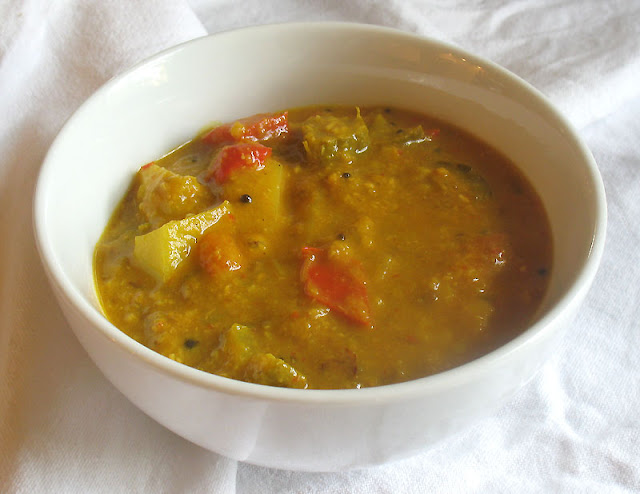
Spicy sambars are usually the primary route of conventional South Indian meals, followed up with the aid of brothy and lighter rasams and other vegetable dishes, together with poriyals. These thick soup-like creations may be made from quite much any vegetables you have got accessible and are usually served with rice and different accompaniments. A regular base for sambars is tamarind, dal and yogurt. They are substantial sufficient to serve as the main path of the meal, as I did with this one with a few rice at the aspect and a few Indian flat breads.
Here, an smooth paste is prepared for inclusion, and the bottom is one among toor dal and tamarind, with eggplant, pepper, potato and drumstick as the starring veggies. I think this have to be my first time cooking with drumstick. It is effortlessly found at Asian and Indian grocery shops. Long and skinny, it is somewhat squash like and a popular addition to curries, dal dishes and soups. It comes from the Moringa tree. In addition to the immature seed pods, which can be referred to as the drumsticks themselves, the leaves, mature seeds or even the roots are fit for human consumption.
The texture of the drumstick provides a nice contrast to the softer eggplant and potato because the outside of the drumstick stays rather organization at some point of the cooking system. This is fiery model of sambar with toor dal, coconut, barely bitter fenugreek and sweet tamarind. I could endorse it's far excellent served with a hot mattress of fresh cooked white rice to reduce some of the warmth, pappadums as an appetizer, and some Indian flat bread in case you are serving as a major meal.

More delicious sambars from Lisa's Vegetarian Kitchen:
Butternut Squash Sambar
Black-Eyed Pea and Mung Bean Sambar
Bitter Melon (Bitter Gourd) Sambar
Tamarind Sambar
On the pinnacle of the studying stack: the newspaper
Audio Accompaniment: morning silence
No comments:
Post a Comment